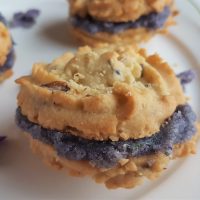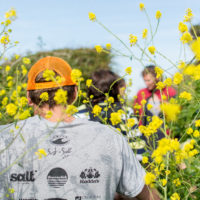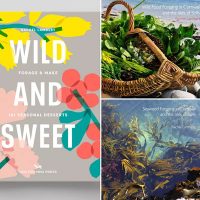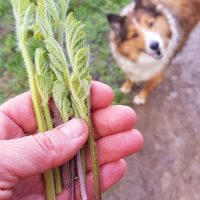Wild Food: Violets
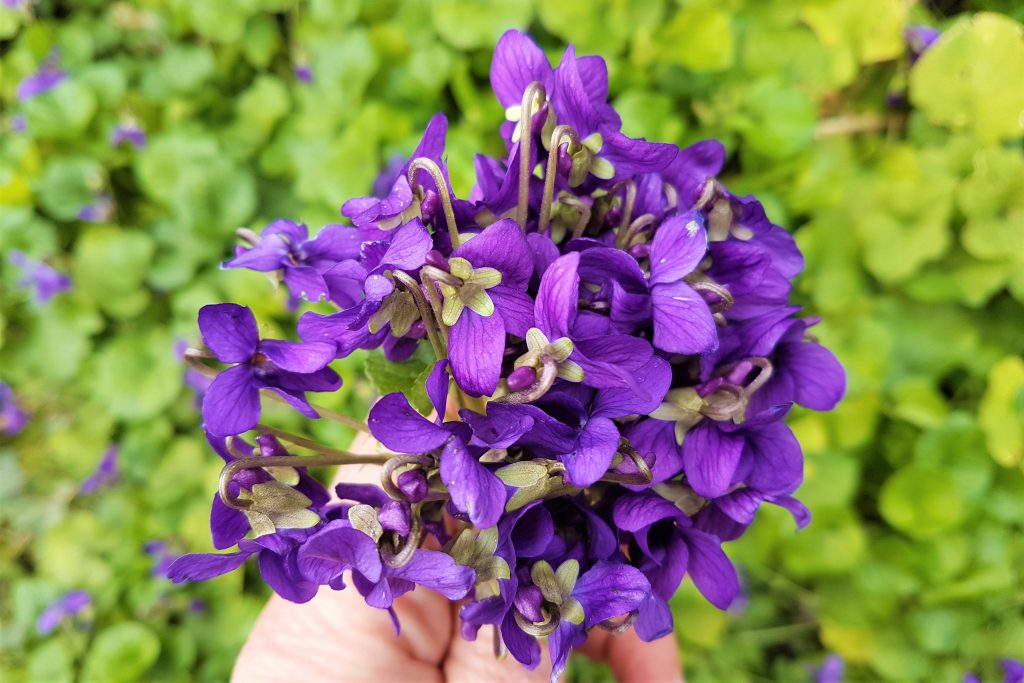
Violets Viola (Violaceae)
Violets have been recorded in recipes since the 16th century, their smell is very evocative of sweets or perfume for many. Edible violets are a delight visually and soothing for the body.
For me, carpets of purple, blue-violet coloured flowers with heart-shaped leaves, these low growing plants have a strong presence. Easier to spot and appreciate when in flower, they are perennials, so return every year with their purple heads. Found across Europe, including most of the British Isles, I also love their French name; violette and North American varieties are known as wood violets or common blue violets.
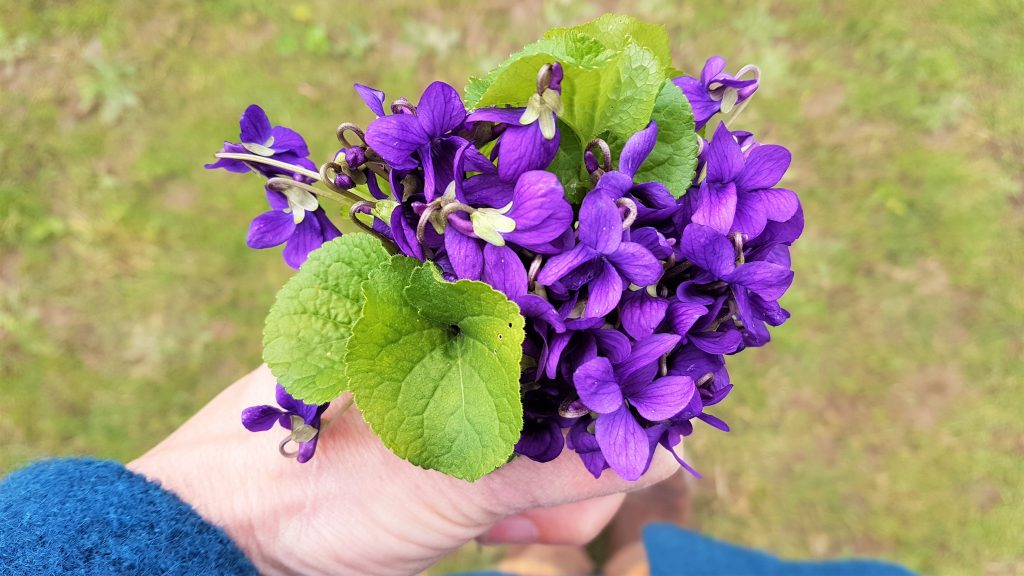
At Christmas I trundle down to the same, small, wooden roadside flower stall, about 5 miles from my home. Driving along Cornish lanes it’s an annual expedition to buy a posy to take to my violet-loving aunt. Such delicate flowers, so tiny, yet so robust in the heart of winter, I love my aunt’s oohs, and aaahs at being brought these flowers.
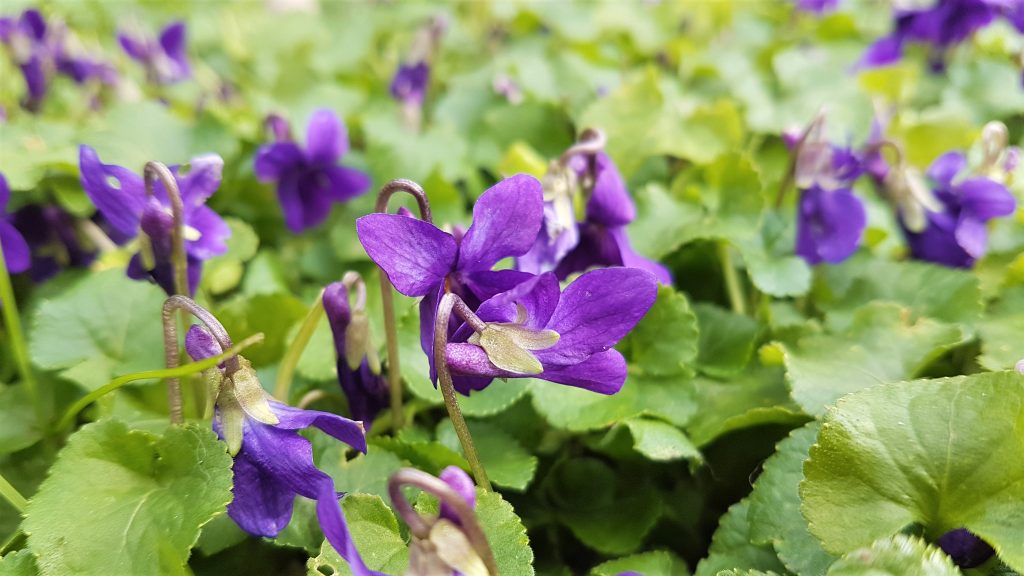
When do violets flower?
Here in Cornwall where the weather is reasonably mild, violets flower through winter and early spring. Traditionally violet flowers would be used to decorate spring cakes, alongside primroses. In other cooler areas of the country and the world, violets tend to flower from Spring to early Summer, though this depends on the variety. Sweet violets (Viola odorata) are an early flowering violet, while common dog violets (Viola riviniana) may also flower through Summer to early Autumn.
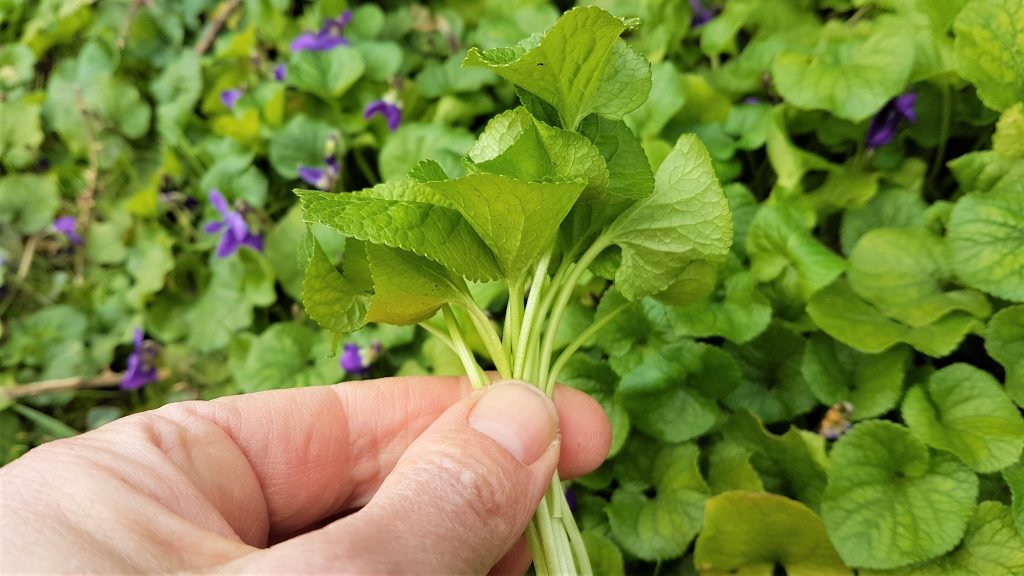
How many types of violets are there?
There are up to 600 varieties of violets growing worldwide, mostly in the Northern hemisphere, with a few exceptions. Violets have also naturalised and been cultivated in many countries including North America, Canada and Australasia. The plant known as African Violet (Saintpaulia) is in the Streptocarpus plant family and not considered a violet (Viola) in terms of this post.
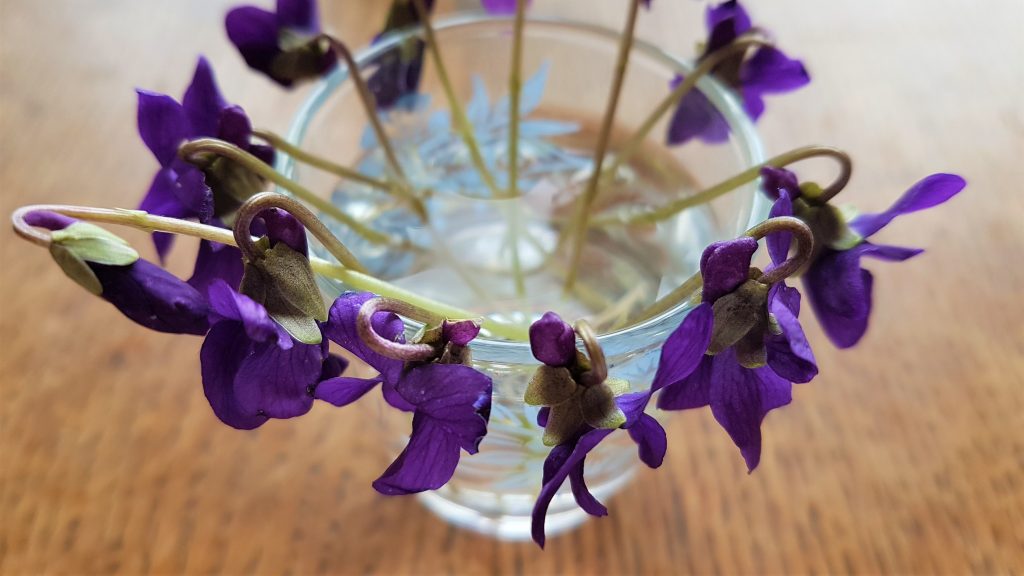
Are all violets edible?
Most violets and pansies are edible, including the violet, purple, blue, white ones and the multi-coloured ones. Though it seems that the yellow varieties are best left alone as they can cause stomach upsets. As I’ve mentioned above, African violets aren’t actually violets (they are part of a different plant family) and are not edible. Most of the recipes I share in a dozen wild violet recipes use sweet violets. They are identified by their scent, early flowering (see above) and deep purple colour.
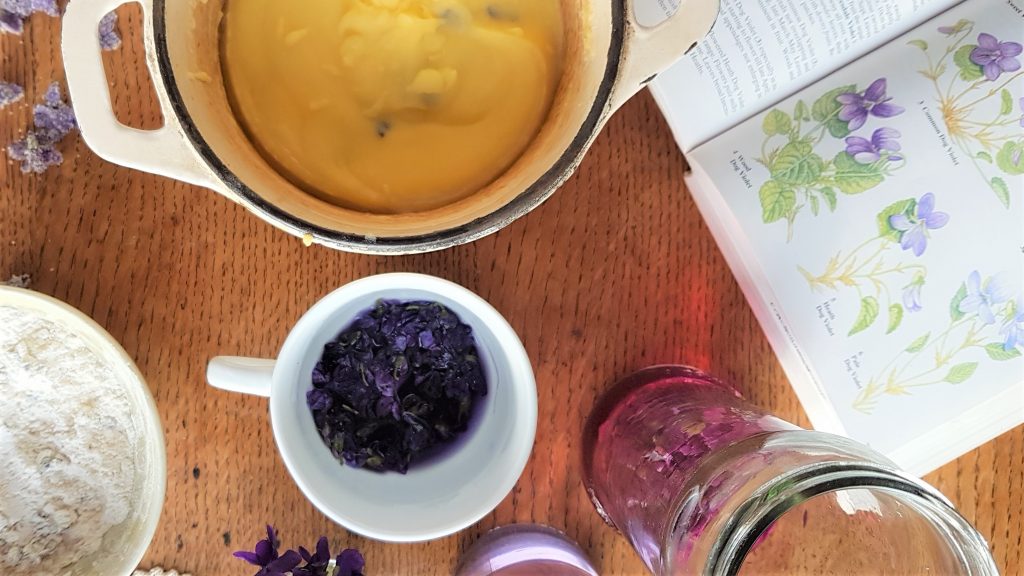
Which are the best violets to eat?
The European sweet violet variety (Viola odorata) is the most perfumed of the violets and the most satisfying to eat and infuse for flavouring and colour. The strong perfume and heavily branded ‘Parma violet sweets’ are flavoured from, you’ve guessed it; parma violet flowers which are thought to be a hybrid of sweet violets and viola alba, originating in Italy. Other violets, such as dog violets, can also be used for their colour, texture and nutrition.
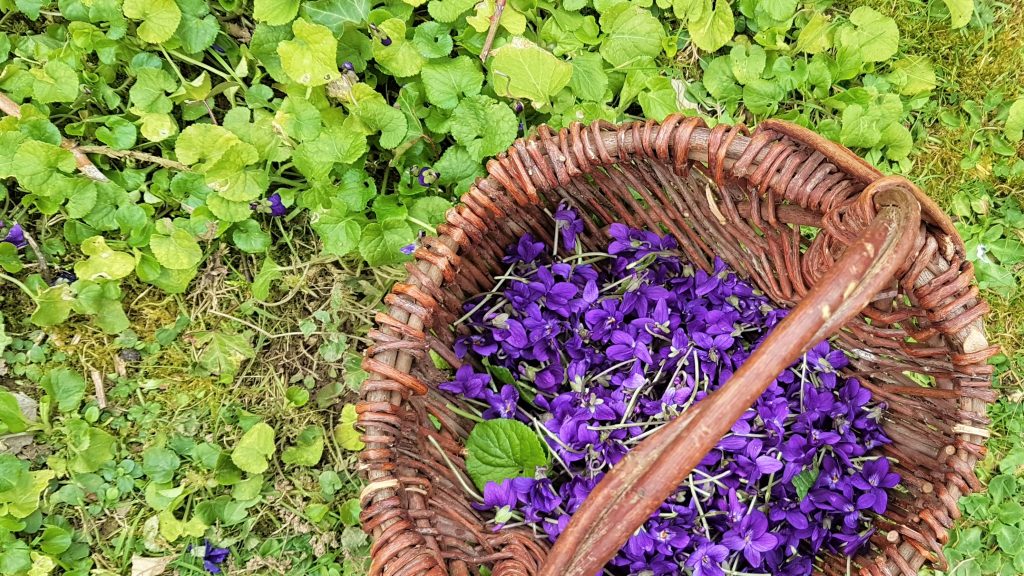
Do violets have any health benefits?
Violet flowers have a high vitamin C and A content. They have been used to treat colds and in cough syrups and for internal and external inflammations. They are also mucilaginous and I find them very gentle for the digestive system. Both the leaves and flowers are renown for soothing skin conditions from eczema, to insect bites and sunburn. Hence being used in massage oils, skin and lip balm and bath salts. Violets can be added straight into a bath, or added in the form of infused oil, vinegar or salt.
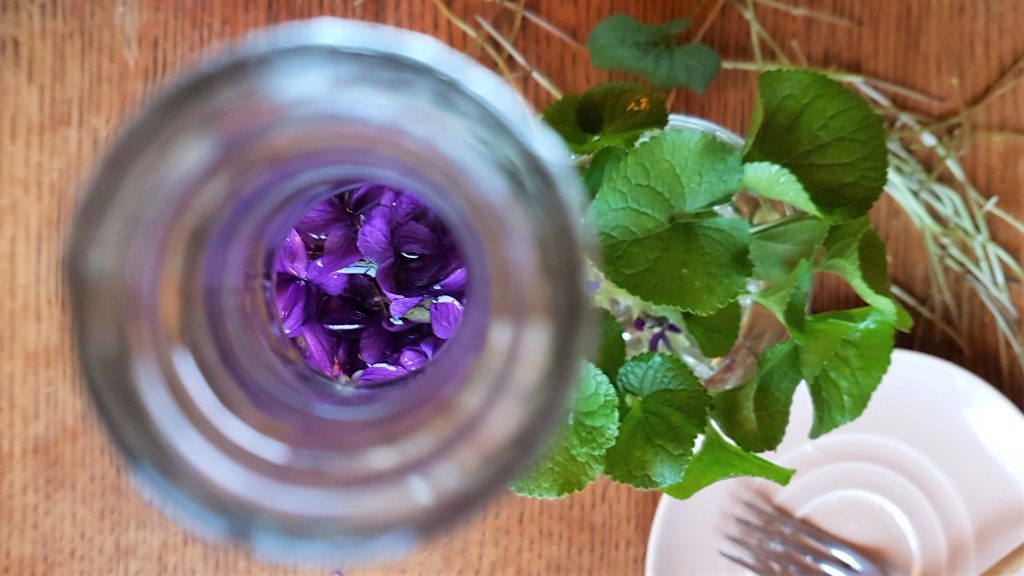
Which parts of violets are edible?
The use of violets have been documented as food and medicine for hundreds of years, and have probably been used since the beginning of time. The flowers, leaves and stems can all be eaten and used as medicine, the rhizomes (roots) have also been used, but very cautiously and only in small amounts. I choose to leave the roots alone for this reason and also to keep the life cycle of the plant intact.
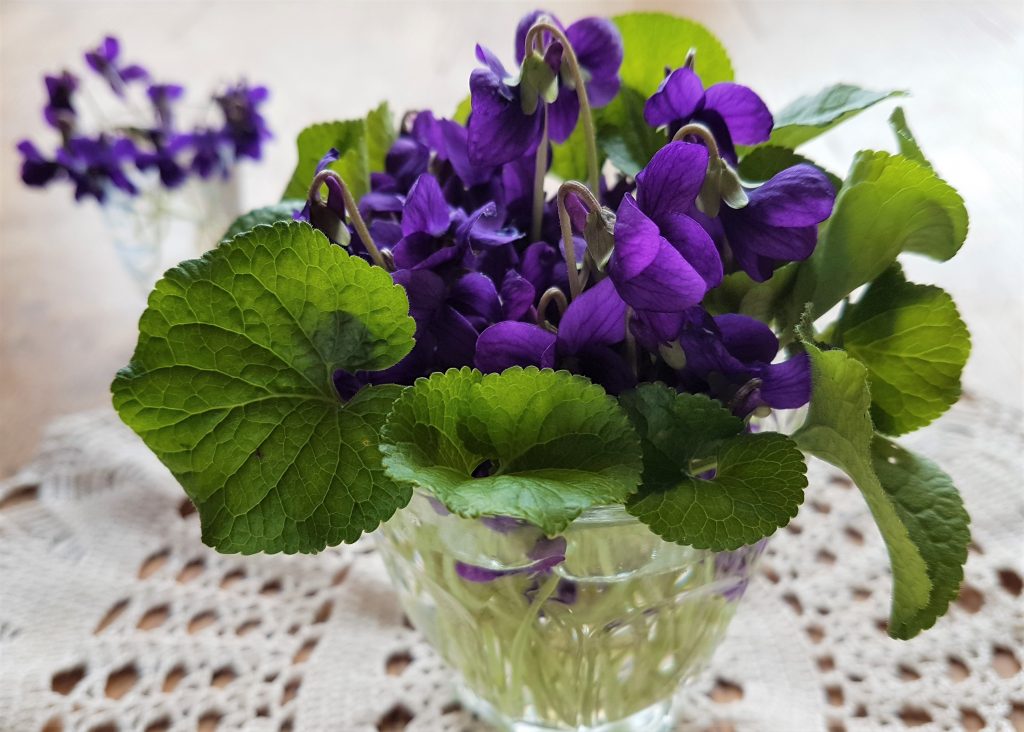
How to use violets in food?
Traditionally violets have been used in; violet candy, violet cakes, violet cream, violet syrup, tea and salads. When cooked, they become sticky and are a perfect natural thickener for soups and stews, I wouldn’t recommend them as a side vegetable though, who wants gloopy veg?!
Despite the scent being strong enough to catch my attention when walking past, I find the flavour of even sweet violets very elusive to capture. Best matched with mild or better still, neutral flavours. Take a look at my, no less than 12 violet recipes I’ve created, including;
Leave a Reply
Tags: African violet, edible flowers, parma violets, Viola, Viola odorata, Viola riviniana, Violaceae, Vitamin C rich foods, wild salad


